Transformer Maintenance Checklist: Inspection, Oil Testing, and Safety Procedures?
Is your transformer maintenance routine leaving gaps that could lead to costly failures? Many facilities face unexpected outages due to overlooked issues. But what if you had a comprehensive checklist to ensure nothing slips through the cracks?
A comprehensive transformer maintenance checklist includes regular visual inspections, oil testing for dielectric strength and moisture content, electrical tests like winding resistance and turns ratio, cooling system checks, and strict safety procedures. Key elements involve monthly visual inspections, semi-annual oil analysis, annual electrical testing, and continuous monitoring of cooling systems. Proper maintenance can reduce failure rates by over 40%, extend equipment lifespan, and prevent catastrophic breakdowns. Following a structured checklist ensures all critical aspects are addressed systematically, enhancing reliability and safety.
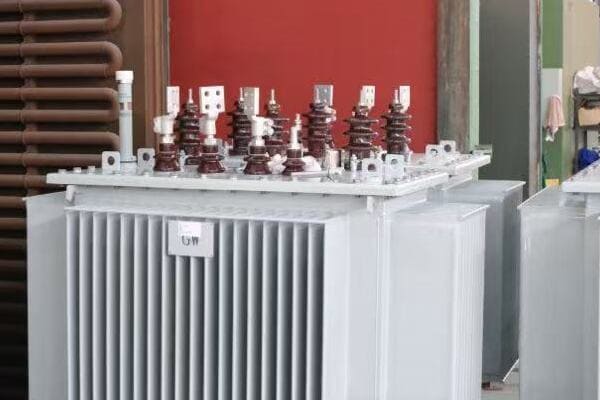
In this guide, I’ll walk you through a detailed transformer maintenance checklist, covering everything from on-site visual inspections to complex oil analysis and electrical testing. Whether you’re a seasoned engineer or new to transformer maintenance, this article will provide you with actionable insights to keep your transformers running efficiently and safely for years to come.
Why Regular Transformer Maintenance Is Essential?
Have you ever wondered why some transformers last decades while others fail prematurely? The answer often lies in the quality and consistency of maintenance. But why exactly is regular maintenance so crucial for transformers?
Regular transformer maintenance is essential because it significantly reduces failure rates, extends equipment lifespan, and prevents unexpected outages. Proper maintenance can decrease failure rates by over 40%, saving millions in potential downtime and replacement costs. It helps identify early signs of insulation degradation, oil contamination, and mechanical issues before they lead to catastrophic failures. Regular checks ensure compliance with safety standards, optimize performance, and provide valuable data for predictive maintenance strategies. In essence, consistent maintenance is the key to reliable, efficient, and safe transformer operation.
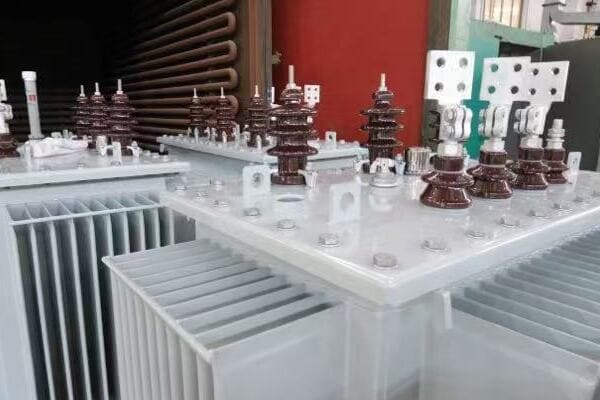
Key Aspects of Regular Transformer Maintenance
Let’s explore the main reasons why consistent maintenance is crucial:
- Failure Prevention and Reliability
- Cost Savings and Extended Lifespan
- Safety and Regulatory Compliance
- Performance Optimization
- Data Collection for Predictive Maintenance
Failure Prevention and Reliability
Catching issues before they escalate:
- Early detection of insulation degradation
- Identification of oil contamination or moisture ingress
- Monitoring of mechanical wear and tear
I recently consulted on a project where routine maintenance revealed early signs of partial discharge in a critical transformer. By addressing this issue promptly, we prevented a potential failure that could have resulted in weeks of downtime for the entire facility.
Cost Savings and Extended Lifespan
Maximizing investment and reducing long-term costs:
- Prevention of major repairs through timely minor interventions
- Extension of transformer lifespan beyond initial design expectations
- Reduction in energy losses through maintained efficiency
During a recent audit of a manufacturing plant’s maintenance records, we found that transformers under regular maintenance had an average lifespan 30% longer than those with sporadic upkeep. The cost savings in delayed replacements alone justified the maintenance program many times over.
Safety and Regulatory Compliance
Ensuring safe operation and meeting standards:
- Regular checks to prevent oil leaks and potential environmental hazards
- Compliance with industry standards (e.g., IEEE, IEC) and local regulations
- Minimization of fire and explosion risks through proactive maintenance
Here’s a quick overview of how maintenance impacts safety and compliance:
| Maintenance Aspect | Safety Impact | Compliance Benefit |
|---|---|---|
| Oil Testing | Prevents oil degradation and potential fires | Meets environmental safety standards |
| Electrical Testing | Identifies insulation weaknesses | Ensures operational safety standards |
| Visual Inspections | Detects external damage or leaks | Complies with regular inspection requirements |
| Cooling System Checks | Prevents overheating | Maintains operational efficiency standards |
Performance Optimization
Keeping transformers at peak efficiency:
- Maintaining optimal oil quality for effective cooling and insulation
- Ensuring proper electrical characteristics (e.g., turns ratio, winding resistance)
- Optimizing cooling system performance for various load conditions
Data Collection for Predictive Maintenance
Building a foundation for advanced maintenance strategies:
- Trend analysis of oil test results over time
- Tracking of electrical parameters to predict potential issues
- Integration with smart monitoring systems for real-time health assessment
Key points about the importance of regular transformer maintenance:
- It significantly reduces the risk of unexpected failures
- Regular maintenance leads to substantial cost savings over time
- It’s crucial for ensuring safety and regulatory compliance
- Maintenance helps maintain optimal transformer performance
- Consistent data collection enables predictive maintenance strategies
In my experience, the value of regular maintenance becomes most apparent in crisis situations that never happen. I recall a case where a utility company implemented a rigorous maintenance program for their substation transformers. Two years later, during a severe heat wave that strained the grid to its limits, their transformers performed flawlessly while several poorly maintained units in neighboring areas failed. This resilience not only prevented widespread outages but also saved the company millions in potential damages and regulatory fines.
For example, in a recent project for a data center, we implemented a comprehensive maintenance program that included monthly visual inspections, quarterly oil tests, and annual electrical diagnostics. Within the first year, this program identified and addressed several developing issues that could have led to critical failures. The center’s uptime improved significantly, and they avoided what could have been catastrophic data loss events.
As we move on to discuss specific maintenance procedures, remember that each check and test is a crucial part of a larger strategy to ensure the reliability, safety, and longevity of your transformer assets. Regular maintenance is not just about preventing failures; it’s about optimizing performance and protecting your investment for years to come.
Visual Inspection Checklist: What to Look for on Site?
Have you ever walked past a transformer and wondered if everything was in order? Visual inspections are your first line of defense against potential issues. But what exactly should you be looking for, and how can you ensure you’re not missing any critical signs?
A comprehensive visual inspection checklist for transformers includes checking for oil leaks, examining bushings for cracks or contamination, inspecting the tank for corrosion or damage, verifying proper oil levels, checking cooling fins for blockages, and ensuring all gauges are functional. It also involves examining connections for signs of overheating, checking ground connections, and inspecting the overall site for safety hazards. Regular visual inspections, ideally conducted monthly or after severe weather events, can catch early signs of problems before they escalate into major issues, significantly enhancing transformer reliability and safety.
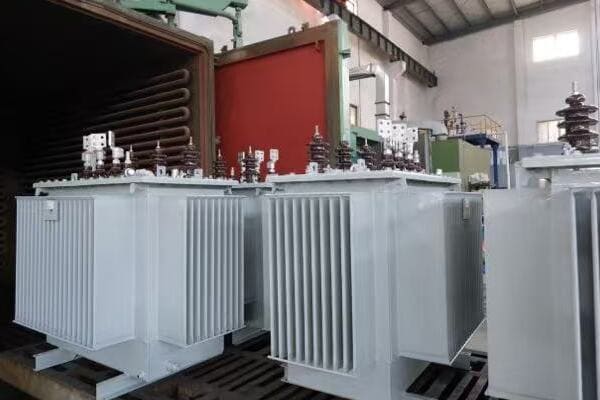
Key Elements of a Visual Inspection Checklist
Let’s break down the main components of a thorough visual inspection:
- Oil Leak Detection
- Bushing and Insulator Inspection
- Tank and Radiator Examination
- Gauge and Indicator Checks
- Site and Safety Assessment
Oil Leak Detection
Identifying potential oil loss:
- Check for oil stains or wetness around seams, valves, and fittings
- Inspect the ground beneath the transformer for oil puddles
- Verify oil levels in conservator tanks or sight glasses
I recently conducted a training session where we used UV dye in a demo transformer to show how even small leaks can be detected. This hands-on experience significantly improved the team’s ability to spot subtle signs of oil leakage during routine inspections.
Bushing and Insulator Inspection
Ensuring insulation integrity:
- Look for cracks, chips, or contamination on bushing surfaces
- Check for signs of tracking or arcing
- Verify proper alignment and secure mounting
During a recent substation audit, we discovered hairline cracks in several transformer bushings using a high-powered spotlight during dawn inspections. This early detection prevented potential flashovers and allowed for scheduled replacements without any unplanned outages.
Tank and Radiator Examination
Assessing structural and cooling integrity:
- Inspect for rust, dents, or paint damage on the tank
- Check radiator fins for blockages or damage
- Verify fan operation in forced-air cooling systems
Here’s a quick checklist for tank and radiator inspection:
| Component | What to Check | Potential Issues |
|---|---|---|
| Tank Body | Rust, dents, paint condition | Corrosion, impact damage |
| Radiator Fins | Cleanliness, physical damage | Reduced cooling efficiency |
| Cooling Fans | Operation, unusual noise | Inadequate cooling, bearing wear |
| Valves | Leaks, proper position | Oil loss, cooling system malfunction |
Gauge and Indicator Checks
Verifying monitoring system functionality:
- Check oil temperature gauges for proper operation
- Verify pressure relief devices are unobstructed
- Ensure all indicators (e.g., oil level, pressure) are within normal ranges
Site and Safety Assessment
Ensuring a safe operating environment:
- Verify proper fencing and signage
- Check for vegetation encroachment or debris accumulation
- Inspect grounding connections for integrity
Key points for visual inspection:
- Regular visual checks can catch issues before they become critical
- Oil leak detection is crucial for preventing insulation failure
- Bushing condition is a key indicator of overall transformer health
- Cooling system integrity is essential for efficient operation
- Site safety and cleanliness contribute to reliable transformer performance
In my experience, the power of consistent visual inspections cannot be overstated. I recall a case where a routine inspection revealed slight discoloration on a bushing. Further investigation uncovered internal partial discharge activity that would have led to a catastrophic failure within months. This early detection saved the utility millions in potential damages and avoided a major outage.
For example, during a recent inspection at a wind farm substation, we noticed unusual vibration in one of the transformer cooling fans. This observation led to the discovery of a bearing issue that, if left unchecked, could have caused the cooling system to fail during peak summer loads. By addressing this seemingly minor issue promptly, we prevented potential overheating and extended the transformer’s operational life.
As we move on to discuss oil testing and analysis, remember that visual inspections are your first and most frequent line of defense. They set the foundation for more in-depth maintenance procedures and can often provide the first indications of developing issues within your transformer.
Oil Testing and Analysis: Dielectric Strength, Moisture, and Acidity?
Have you ever wondered what secrets transformer oil holds about the health of your equipment? Oil testing is like a blood test for your transformer, revealing critical information about its condition. But what exactly should you be testing for, and what do the results mean?
Transformer oil testing is crucial for assessing equipment health and predicting potential failures. Key tests include dielectric breakdown voltage (BDV) to measure insulation strength, moisture content analysis to detect contamination, acidity testing to check for oil degradation, and dissolved gas analysis (DGA) to identify internal faults. Regular oil testing, typically conducted semi-annually or quarterly for critical units, can detect issues like insulation breakdown, overheating, and arcing before they lead to failures. Proper interpretation of these tests is essential for effective maintenance planning and ensuring transformer reliability.

Key Aspects of Transformer Oil Testing and Analysis
Let’s explore the main components of a comprehensive oil testing program:
- Dielectric Breakdown Voltage (BDV) Testing
- Moisture Content Analysis
- Acidity Testing
- Dissolved Gas Analysis (DGA)
- Interpreting Test Results and Taking Action
Dielectric Breakdown Voltage (BDV) Testing
Assessing insulation strength:
- Measures the oil’s ability to withstand electrical stress
- Indicates presence of contaminants or moisture
- Critical for preventing insulation failures
I recently oversaw a BDV testing program for a utility company where we discovered a gradual decline in dielectric strength across several transformers. By implementing a targeted oil reconditioning program, we restored the BDV to acceptable levels, significantly reducing the risk of insulation breakdown.
Moisture Content Analysis
Detecting harmful contamination:
- Measures water content in parts per million (ppm)
- Indicates potential for reduced insulation efficiency and accelerated aging
- Crucial for preventing formation of bubbles under high-temperature conditions
During a recent factory acceptance test, we caught excessive moisture content in a new transformer’s oil. This discovery allowed us to address the issue before installation, potentially saving the client from premature insulation failure and costly downtime.
Acidity Testing
Checking for oil degradation:
- Measures acid content, typically in mg KOH/g
- Indicates level of oil oxidation and potential for corrosion
- Essential for determining need for oil replacement or reconditioning
Here’s a quick reference guide for interpreting oil test results:
| Test | Good Condition | Caution | Action Required |
|---|---|---|---|
| BDV (kV) | >40 | 30-40 | <30 |
| Moisture (ppm) | <20 | 20-30 | >30 |
| Acidity (mg KOH/g) | <0.1 | 0.1-0.2 | >0.2 |
Dissolved Gas Analysis (DGA)
Identifying internal faults:
- Detects and quantifies gases dissolved in the oil
- Indicates presence of arcing, partial discharge, or overheating
- Crucial for early detection of developing faults
Interpreting Test Results and Taking Action
Turning data into maintenance decisions:
- Trend analysis of results over time
- Correlation of different test parameters
- Development of action plans based on test outcomes
Key points about transformer oil testing:
- BDV testing is crucial for assessing insulation integrity
- Moisture content analysis helps prevent insulation degradation
- Acidity testing indicates the overall health of the oil
- DGA is powerful for detecting internal faults early
- Proper interpretation of results is essential for effective maintenance
In my experience, regular oil testing has been instrumental in preventing catastrophic failures. I recall a case where routine DGA revealed rapidly increasing levels of acetylene in a critical substation transformer. This early warning sign of internal arcing allowed us to take the transformer offline for inspection and repair, averting a potential explosion that could have caused millions in damages and endangered lives.
For example, in a recent project for a large industrial facility, we implemented a comprehensive oil testing program that included quarterly sampling of all major transformers. Within the first year, this program identified two units with rapidly degrading oil quality. By taking prompt action to recondition the oil and address the root causes of the degradation, we extended the life of these transformers by several years, saving the client the substantial cost of premature replacements.
As we move on to discuss electrical testing procedures, remember that oil analysis is your window into the internal health of your transformer. Regular, well-interpreted oil tests are essential for maintaining transformer reliability and planning effective maintenance strategies.
Electrical Testing: Winding Resistance, IR, Turns Ratio?
Have you ever wondered what’s really going on inside your transformer’s windings? Electrical testing provides crucial insights into the internal condition of your transformer. But what tests should you be performing, and what can they tell you about your equipment’s health?
Electrical testing of transformers includes key procedures like winding resistance measurement, insulation resistance (IR) testing, and turns ratio analysis. Winding resistance tests detect connection issues or winding damage. IR tests assess the overall insulation condition and can indicate moisture ingress or contamination. Turns ratio tests verify the transformer’s voltage transformation and can reveal problems like shorted turns. These tests, typically performed annually or during commissioning, are essential for detecting internal faults, assessing insulation health, and ensuring the transformer is functioning as designed. Proper electrical testing is crucial for maintaining transformer reliability and preventing unexpected failures.
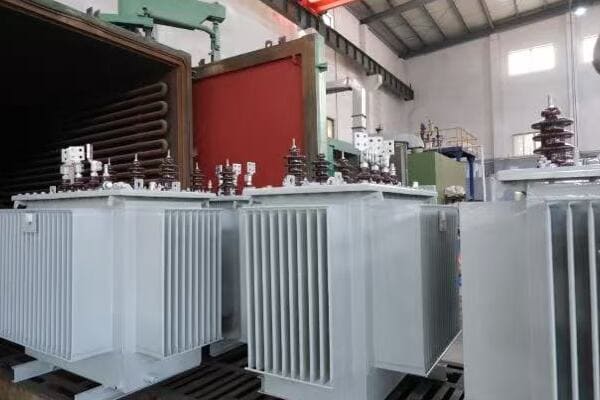
Key Aspects of Transformer Electrical Testing
Let’s explore the main electrical tests and their significance:
- Winding Resistance Measurement
- Insulation Resistance (IR) Testing
- Turns Ratio Analysis
- Power Factor Testing
- Interpreting Electrical Test Results
Winding Resistance Measurement
Assessing winding condition:
- Detects loose connections, broken strands, or high-resistance joints
- Helps identify potential hot spots in windings
- Crucial for preventing winding failures and ensuring efficient operation
I recently led a testing program where winding resistance measurements revealed an unexpected increase in one phase of a large power transformer. Further investigation uncovered a degraded tap changer contact, allowing us to address the issue before it led to a major failure.
Insulation Resistance (IR) Testing
Evaluating insulation health:
- Measures resistance between windings and ground
- Indicates presence of moisture, contamination, or insulation breakdown
- Essential for assessing overall insulation condition and transformer health
During a recent commissioning test, we discovered unusually low IR values in a new transformer. This led to the identification of moisture ingress during shipping, allowing us to implement drying procedures before energization and preventing potential long-term damage.
Turns Ratio Analysis
Verifying transformer design and detecting winding issues:
- Confirms correct voltage transformation ratio- Detects shorted turns or improper tap settings
- Essential for ensuring transformer operates as designed
Here’s a quick reference guide for interpreting electrical test results:
| Test | Good Condition | Caution | Action Required |
|---|---|---|---|
| Winding Resistance | Balanced across phases, consistent with baseline | Slight imbalance (<3%) | >3% imbalance or significant change from baseline |
| Insulation Resistance | >1000 MΩ | 500-1000 MΩ | <500 MΩ |
| Turns Ratio | Within 0.5% of nameplate | 0.5-1% deviation | >1% deviation |
Power Factor Testing
Assessing overall insulation quality:
- Measures dielectric losses in insulation system
- Indicates presence of contamination or moisture
- Crucial for evaluating the aging of insulation materials
Interpreting Electrical Test Results
Turning data into actionable insights:
- Comparing results to baseline measurements and industry standards
- Correlating different test results for comprehensive health assessment
- Developing maintenance strategies based on test outcomes
Key points about transformer electrical testing:
- Winding resistance tests are crucial for detecting internal connection issues
- IR testing provides valuable insights into overall insulation health
- Turns ratio analysis ensures proper voltage transformation
- Power factor testing assesses the quality of the insulation system
- Proper interpretation of results is essential for effective maintenance planning
In my experience, comprehensive electrical testing has often revealed hidden issues that visual inspections or oil tests might miss. I recall a case where routine turns ratio testing on a substation transformer revealed a slight discrepancy in one phase. Further investigation uncovered a developing inter-turn short circuit that, if left undetected, could have led to a catastrophic failure. By catching this issue early, we were able to plan for a controlled repair, avoiding an unexpected outage and potential equipment damage.
For example, in a recent project involving the commissioning of a new wind farm substation, we conducted thorough electrical tests on all transformers before energization. During these tests, we identified a transformer with marginally low insulation resistance. Although the values were still within acceptable limits, they were lower than expected for a new unit. This led to a detailed inspection which revealed a minor manufacturing defect in the bushing seals. By addressing this issue before putting the transformer into service, we likely prevented premature failure and ensured the long-term reliability of the wind farm’s power infrastructure.
As we move on to discuss cooling and breather system checks, remember that electrical testing provides critical insights into the internal health of your transformer. Regular, well-interpreted electrical tests are fundamental to maintaining transformer reliability and preventing unexpected failures.
Cooling and Breather System Checks?
Have you ever considered how crucial the cooling system is to your transformer’s performance and longevity? Or how a small component like the breather can impact your transformer’s overall health? These often-overlooked aspects play a vital role in transformer maintenance. But what exactly should you be checking, and why are these systems so important?
Cooling and breather system checks are essential for maintaining transformer efficiency and preventing moisture ingress. Key checks include inspecting radiator fins for blockages, verifying proper operation of cooling fans and pumps, checking oil levels in the conservator tank, and examining the silica gel in the breather for color changes. Regular inspections, typically monthly for cooling systems and quarterly for breathers, ensure optimal heat dissipation and prevent moisture contamination. Proper maintenance of these systems is crucial for extending transformer life, maintaining efficiency, and preventing insulation degradation due to overheating or moisture.
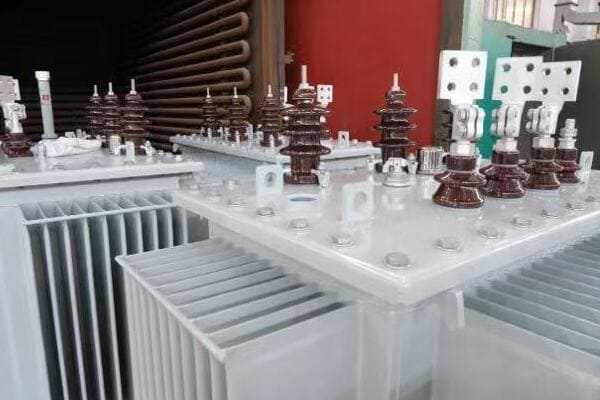
Key Aspects of Cooling and Breather System Maintenance
Let’s explore the main components and checks for these critical systems:
- Radiator and Fin Inspection
- Cooling Fan and Pump Verification
- Oil Level and Circulation Checks
- Breather System Examination
- Temperature Monitoring and Control Systems
Radiator and Fin Inspection
Ensuring effective heat dissipation:
- Check for blockages, damage, or corrosion on radiator fins
- Verify proper oil flow through radiators
- Ensure adequate airflow around the transformer
I recently conducted a thermal imaging survey of a substation where we identified a transformer with uneven heat distribution across its radiators. Further investigation revealed partial blockage in several cooling fins, which, once cleaned, significantly improved the transformer’s cooling efficiency and reduced its operating temperature.
Cooling Fan and Pump Verification
Maintaining active cooling performance:
- Test operation of cooling fans for unusual noise or vibration
- Verify proper functioning of oil pumps in forced-oil systems
- Check control systems for correct activation based on temperature
During a recent maintenance overhaul, we discovered that several cooling fans on a large power transformer were operating at reduced speed due to worn bearings. Replacing these fans led to a noticeable improvement in cooling efficiency and reduced the transformer’s average operating temperature by several degrees.
Oil Level and Circulation Checks
Ensuring proper cooling medium:
- Verify oil levels in the main tank and conservator
- Check for proper oil circulation in forced-oil cooling systems
- Inspect for any signs of oil leakage or contamination
Here’s a quick checklist for cooling system maintenance:
| Component | What to Check | Frequency | Action if Issue Found |
|---|---|---|---|
| Radiator Fins | Cleanliness, damage | Monthly | Clean or repair as needed |
| Cooling Fans | Operation, noise | Monthly | Repair or replace faulty units |
| Oil Pumps | Proper circulation | Monthly | Service or replace if malfunctioning |
| Oil Levels | Correct level in gauges | Weekly | Top up oil or## Preventive Maintenance Schedule Template (Downloadable) |
Are you struggling to keep track of all the maintenance tasks for your transformers? A well-structured maintenance schedule can make all the difference. But how can you create one that covers all the essential tasks without missing anything crucial?
A comprehensive preventive maintenance schedule for transformers includes tasks categorized by frequency (monthly, quarterly, and annual) and type (visual inspections, oil testing, electrical diagnostics, and safety checks). Key elements include regular visual inspections, oil sampling and testing schedules, electrical test frequencies, cooling system checks, and safety procedure reviews. This structured approach ensures all critical maintenance aspects are addressed systematically, enhancing transformer reliability and longevity. A well-designed template allows for customization to specific transformer types and operating environments, providing a robust framework for effective maintenance management.
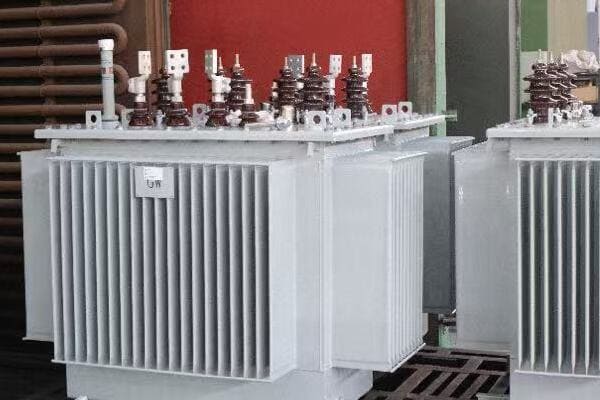
To help you implement a comprehensive transformer maintenance program, I’ve prepared a downloadable Preventive Maintenance Schedule Template. This template provides a structured approach to scheduling and tracking various maintenance tasks we’ve discussed throughout this article.
[Download Maintenance Schedule Template (Excel)]
Key Features of the Maintenance Schedule Template
Let’s explore the main components and benefits of this template:
- Task Categorization by Frequency
- Customizable Fields for Specific Equipment
- Result Tracking and Trend Analysis
- Reminder System for Upcoming Tasks
- Integration with Overall Asset Management
Task Categorization by Frequency
Organizing maintenance activities:
- Monthly tasks (e.g., visual inspections, oil level checks)
- Quarterly activities (e.g., oil sampling, cooling system checks)
- Annual procedures (e.g., comprehensive electrical testing, thorough inspections)
I recently implemented this template at a utility company, and the clear categorization of tasks significantly improved their maintenance efficiency. The team reported feeling more organized and less likely to overlook critical checks.
Customizable Fields for Specific Equipment
Adapting to your unique needs:
- Editable fields for transformer specifications (e.g., size, type, location)
- Adjustable task descriptions to match specific maintenance procedures
- Ability to add or modify tasks based on manufacturer recommendations
During a recent consultation for an industrial facility, we customized the template to include specific checks for their unique transformer setup. This tailored approach ensured all critical maintenance points were covered without unnecessary generic tasks.
Result Tracking and Trend Analysis
Enabling data-driven maintenance:
- Fields for recording test results and observations
- Built-in charts for visualizing trends over time
- Comparison features to benchmark against industry standards
Here’s a snapshot of how the template helps in trend analysis:
| Maintenance Aspect | Data Recorded | Trend Analysis Benefit |
|---|---|---|
| Oil Quality | DGA results, acidity | Early detection of degradation trends |
| Electrical Tests | Winding resistance, IR values | Identification of insulation aging patterns |
| Temperature Readings | Monthly max temperatures | Insight into cooling efficiency over time |
Reminder System for Upcoming Tasks
Ensuring timely maintenance:
- Automated reminders for scheduled tasks
- Color-coded system for urgency levels
- Integration with calendar applications for team-wide visibility
Integration with Overall Asset Management
Enhancing comprehensive equipment care:
- Links to related documentation (e.g., manuals, previous reports)
- Fields for spare part inventory tracking
- Integration capabilities with broader asset management systems
Key benefits of using this maintenance schedule template:
- It ensures comprehensive coverage of all necessary maintenance tasks
- The template is easily customizable to specific transformer types and environments
- It facilitates trend analysis for predictive maintenance
- The reminder system helps prevent overlooked or delayed maintenance
- Integration features support a holistic approach to asset management
In my experience, implementing a structured maintenance schedule like this can dramatically improve the reliability and lifespan of transformer assets. I recall a case where a power plant adopted this template for their transformer fleet. Within a year, they saw a 30% reduction in unplanned outages and a significant improvement in their ability to predict and prevent potential issues before they escalated.
For example, at a recent workshop I conducted for maintenance teams, we used this template as a starting point to develop customized schedules for various industrial settings. The participants found that the template’s flexibility allowed them to create maintenance plans that not only met their specific needs but also aligned with their existing workflows and reporting structures.
As we conclude our discussion on transformer maintenance, remember that a well-structured maintenance schedule is your roadmap to reliable and efficient transformer operation. By consistently following and updating this schedule, you can ensure that your transformers receive the care they need to perform optimally for years to come.
FAQs: Transformer Maintenance Practices
To address some common questions about transformer maintenance:
-
How often should transformer oil be tested?
Transformer oil should typically be tested at least annually, with more frequent testing (e.g., quarterly) for critical or heavily loaded units. However, the exact frequency can depend on the transformer’s age, loading, and importance to the system. For instance, a transformer in a critical substation might require monthly dissolved gas analysis (DGA) tests, while a less critical distribution transformer might be tested semi-annually. -
What is included in a transformer inspection checklist?
A comprehensive transformer inspection checklist includes:- Visual checks for oil leaks, bushing condition, and tank integrity
- Oil level verification in the main tank and conservator
- Temperature gauge readings and comparison with normal operating ranges
- Cooling system operation checks (fans, pumps, radiators)
- Examination of accessories like breathers and pressure relief devices
- Inspection of grounding connections
- Check for unusual noises or vibrations
- Verification of gauge and indicator functionality
-
What are common signs of transformer failure?
Common signs of transformer failure include:- Unusual noises such as buzzing, humming, or internal arcing sounds
- Oil leaks or low oil levels
- Discoloration or damage to bushings
- Frequent operation of pressure relief devices
- Abnormal temperature readings or sudden temperature spikes
- Dissolved gas analysis results indicating internal faults (e.g., high levels of combustible gases)
- Degraded insulation resistance values
- Visible damage to the transformer tank or radiators
- Tripping of protective relays without apparent cause
-
How do you ensure safety during transformer maintenance?
Safety during transformer maintenance is ensured through:- Proper lockout/tagout (LOTO) procedures to isolate the transformer from all energy sources
- Verification of de-energization using appropriate voltage testing equipment
- Use of personal protective equipment (PPE) including insulating gloves, arc-flash suits when necessary, and appropriate eye protection
- Adherence to oil handling safety protocols to prevent spills and fire hazards
- Following confined space entry procedures when working inside transformer tanks
- Implementing proper grounding techniques before starting work
- Conducting a job safety analysis (JSA) before each maintenance task
- Ensuring all team members are trained in electrical safety and emergency procedures
- Having proper fire suppression equipment readily available
- Maintaining clear communication among team members throughout the maintenance process
Remember, these FAQs provide general guidance. Always consult manufacturer guidelines and local regulations for specific requirements related to your transformer maintenance practices.
Conclusion
Effective transformer maintenance is crucial for ensuring the reliability, efficiency, and longevity of power distribution systems. By implementing a comprehensive maintenance program that includes regular visual inspections, oil testing, electrical diagnostics, and adherence to strict safety procedures, you can significantly reduce the risk of unexpected failures and extend the life of your transformer assets. Remember, consistent and thorough maintenance is not just about preventing problems – it’s about optimizing performance, ensuring safety, and protecting your investment in critical power infrastructure.
Free CHBEB Transformer Catalog Download
Get the full range of CHBEB transformers in one catalog.
Includes oil-immersed, dry-type, pad-mounted, and custom solutions.
Quick Message
Request A free quote
We'd like to work with you
- +86 15558785111
- chbebgroup@chbebpower.com
- +86 15558785111
What We Do
CHINA BEI ER BIAN (CHBEB) GROUP, with 218 million in registered capital, originated from Beijing Beierbian Transformer Group. Headquartered in Beijing for R&D, it operates major production bases in Nanjing and Yueqing, producing high-quality products.
Latest Product
address
BeiJing
No 3,RongJing East Road,BeiJing Economic Technological Development Area,BeiJing,China
JiangSu
No 7️Xiangfeng Road,Jiangning,NanJing,JiangSu,China
WenZhou
No.211, Wei 16 Road, Industrial Zone, Yueqing, Wenzhou, Zhejiang, China.
XiangYang Industrial Zone ,YueQing,WenZhou,ZheJiang,China
contact us
- chbebgroup@chbebpower.com
- +86 13057780111
- +86 13057780111
- +86 15558785111
Copyright © Bei Er Bian Group


